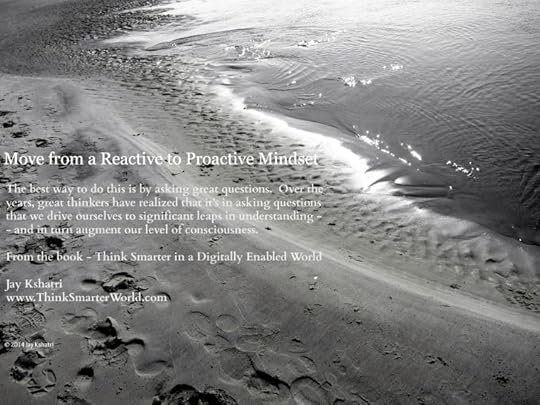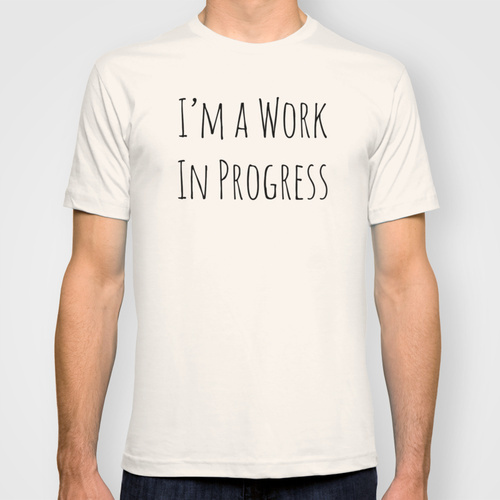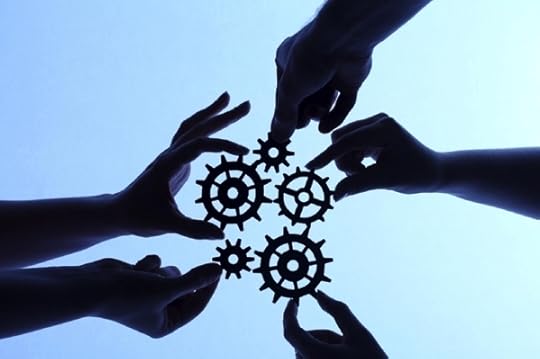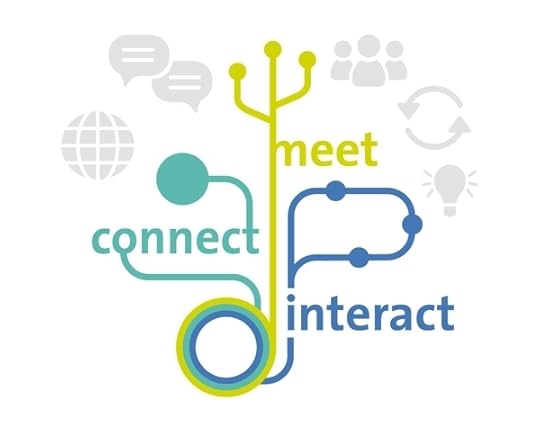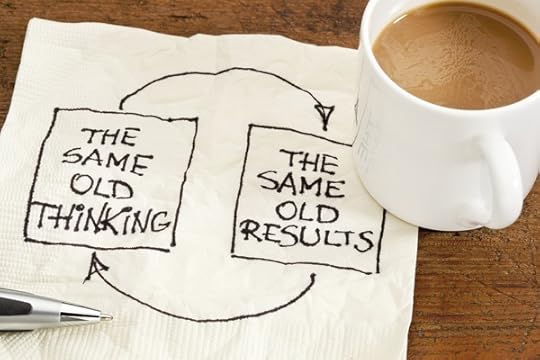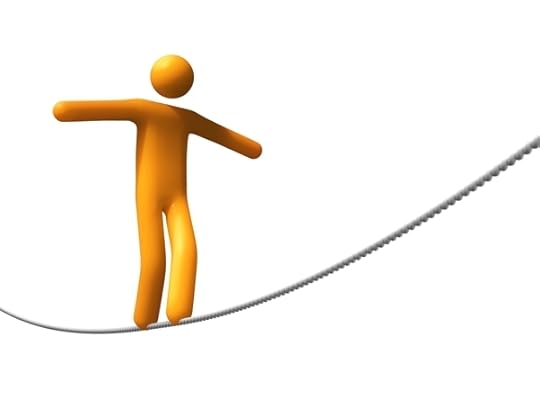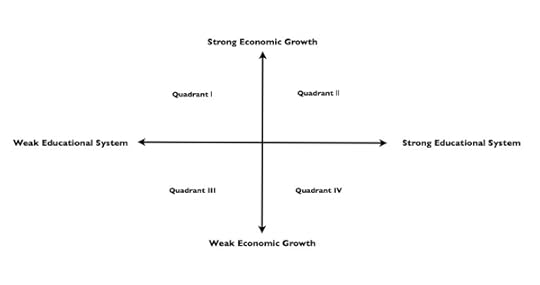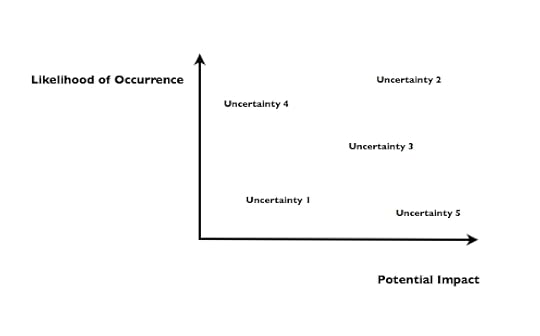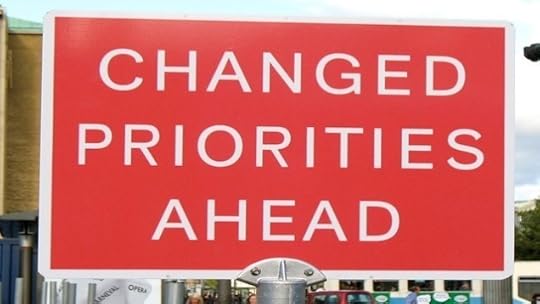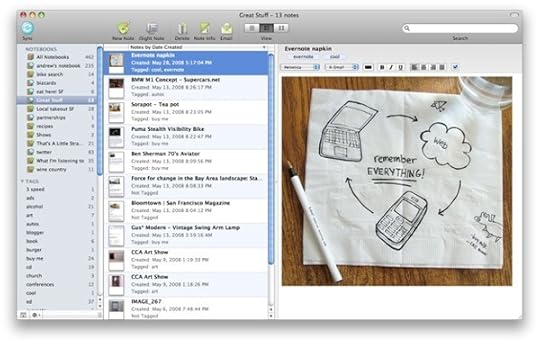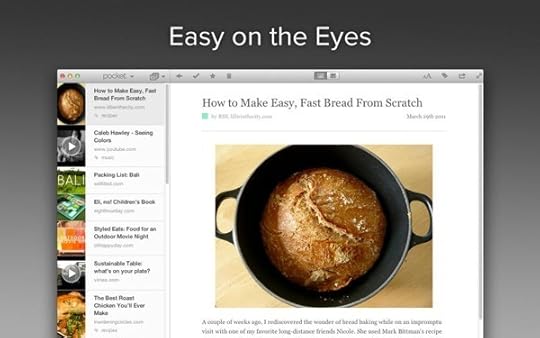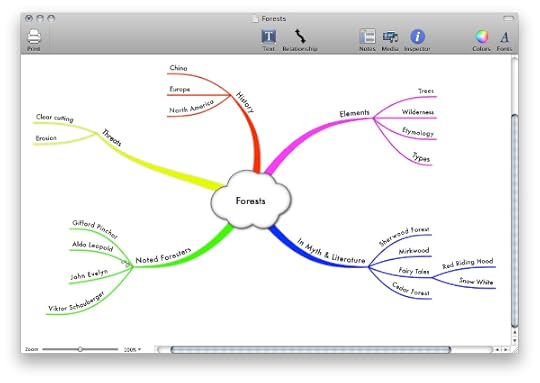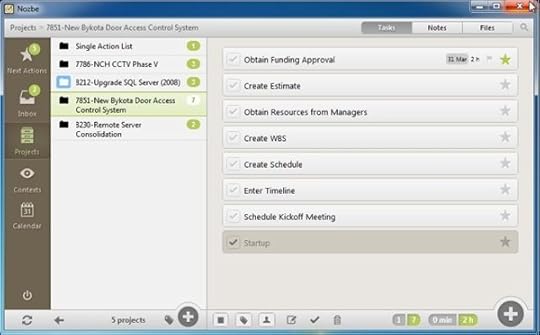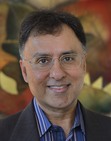Jay Kshatri's Blog, page 15
June 27, 2014
Non-Profit’s as Human Change-Agents [Quote]




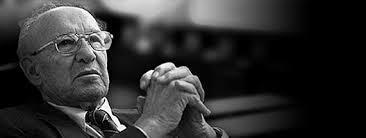 “The Non-Profit Institutions are human change-agents. Their “product” is a cured patient, a child that learns, a young man or woman grown into a self-respecting adult; a changed human life altogether”. -Management Guru, Peter F. Drucker From his book: Managing the Nonprofit Organization
“The Non-Profit Institutions are human change-agents. Their “product” is a cured patient, a child that learns, a young man or woman grown into a self-respecting adult; a changed human life altogether”. -Management Guru, Peter F. Drucker From his book: Managing the Nonprofit Organization


The post Non-Profit’s as Human Change-Agents [Quote] appeared first on Think Smarter World.
June 12, 2014
Moving from a Reactive to Proactive Mindset [Photo]
June 11, 2014
We need to turn our brains into noise canceling headphones
We need to turn our brains into noise canceling headphones. – Shawn Achor, Professor of Psychology at Harvard University, and author of The Happiness Advantage
We need to decrease both the external noise and the internal noise in our lives says Professor Shawn Achor. Research shows the brain processes noise and negative things first and then the meaning. So if you have a lot of noise and meaningless information and entertainment clogging your external world and non stop chatter and worry generated by the voice in your head clogging your internal world, then your brain never gets to the good stuff. The meaningful important bits that allow us to develop gratitude, compassion, contentment, peace, and happiness. Achor cites Research on kids with ADHD (Attention Deficit Hyperactivity Disorder) that showed just by taking them into a quiet place with no external stimulus drastically lowered their symptoms. As the noise and distraction level in our environment has gone up is it any wonder ADHD levels are rising sharply ? (2013 CDC survey results showed ADHD now is around 11% of the youth population up from 3% in the 1970’s).
Noise canceling headphones work by introducing the opposite frequency of the noise you want to cancel. We need to do the same thing. Feeling too much negativity? – then cancel it with positive imagery, content, music, and exercise. Unfortunately, what we end up doing too much of the time is noise amplifying – consuming an ever-increasing amount of negative news stories, violent tv, movies, games, and disturbing music.
So go put on those brain noise canceling headphones and take back your sanity (and happiness).
Resources:
Meditation remains the best way to lower the internal noise in our minds. See this previous post – Effortless Meditation – on how to get started: http://www.thinksmarterworld.com/2013/11/19/effortless-meditation-2/ and this one on Mindfulness: http://www.thinksmarterworld.com/2014/04/30/mindfulness-experiencing-reality-hd/
Much of the noise we consume is through mainstream media sources. Here is a post I wrote that gives you 21 different ways to free your mind from mass media: http://www.thinksmarterworld.com/2014/03/10/21-ingredients-healthy-delicious-media-diet/
~Jay Kshatri
The post We need to turn our brains into noise canceling headphones appeared first on Think Smarter World.
June 9, 2014
Imperfection merely means Incompletion
Practice “self love and love of all others–and
love of the imperfections you imagine you see in both.
In truth, both are perfect in their ‘imperfection,’ for
‘imperfection’ merely means ‘incompletion.”
Neale Donald Walsch
I can’t get that line out of my head – “imperfection” merely means “incompletion”. In relation to our view and judgement of other people, it implies and requests a level of acceptance that most of us don’t achieve on a daily basis.
The sentiment resonated especially strongly today, as I ran into an old colleague who I hadn’t seen for over five years. He told me of the changes in his life and the personal transformation that he had achieved. As he spoke, I could tell that he had in fact changed from the person I knew from five years ago – all for the better. So, what before had been in my view a number of imperfections in his basic character and the dominance of his strong ego over his life, had actually been “incompletions” that needed time to materialize into life changes. He was now a more complete version of his true self.
The quote of course says to also apply this level of acceptance to yourself. We can all be overcritical on ourselves from time to time. But if we view the current iteration of ourselves as a work in progress, an incomplete masterpiece being worked on if you will, then we can achieve a healthy level of self-acceptance that allows us to be fully present with who we are while still acknowledging the better version of ourselves we will one day become.
The post Imperfection merely means Incompletion appeared first on Think Smarter World.
May 8, 2014
Using Technology to Learn from Each Other
In 2006, “You” were chosen as Time Magazine’s Person of the Year. Time wanted to recognize the millions of people around the globe who were generating unique content on the world’s blogs, social networks, and personal websites, and as such, a more fitting choice could not have been made. The Time editors stated in explaining their choice:
It’s a story about community and collaboration on a scale never seen before … It’s about the many wresting power from the few and helping one another for nothing and how that will not only change the world, but also change the way the world changes. The tool that makes this possible is the World Wide Web … The new Web is a very different thing. It’s a tool for bringing together the small contributions of millions of people and making them matter. Silicon Valley consultants call it Web 2.0, as if it were a new version of some old software. But it’s really a revolution.
Over the last decade, new Internet technologies such as YouTube, Facebook, Twitter, Blogs, Podcasts, Pinterest, Instagram, and LinkedIn have unleashed our abilities to create and share our expertise, insights, and wisdom with our fellow citizens easily and economically. But yet when the Time Magazine choice was released, it was heavily criticized. Why? Perhaps because it edged out various high-profile events around the world and numerous people making dramatic impacts at a global level.
In retrospect, however, it should be clear this was a bold and insightful pick—the accessibility of the world’s collective knowledge through our new digital technologies has and will continue to dramatically change our world. Those of us who can tap into this seismic shift will have a sizable advantage on both a personal and professional level.
Of course, “amateur experts” or enthusiasts have always been among us. We’ve all known people who have deep insight into various hobbies and interests and have developed expertise in those areas. Now, if we happened to live in the same area as these people, we could perhaps attend a lecture or group meeting and learn from their expertise (assuming a group exists, and that the particular person was willing and able to share that knowledge). But if not, we would be out of luck.
We’ve also had access for many years to specialty magazines from which we’ve benefited. These publications make efforts to harness expertise from around the globe; however, they can only do so much with a limited amount of time, copy space, and money. They also tend to focus on covering information from professionals in the field, rather than from advanced amateurs who sometimes know quite a bit as well.
Professional views are always valuable; after all, these are people who get paid for their efforts and do it often (as their primary occupation). Amateurs, however, may likewise spend a great deal of time on the subject, and thereby develop similar levels of expertise. They may also come with different experiences and perspectives than professionals, who often need to stay in a certain mold to be in alignment with the needs of their profession. Amateurs can therefore be a bit freer, and this can provide us with interesting takes on a given topic that we might not otherwise receive.
Of course, not all amateur content is created equal and we certainly see a lot of variability. Think of YouTube as an example. There is no doubt that there’s a significant amount of poorly presented and untrue information floating around on the Web. Anyone with an “Internet microphone” can say whatever they like and they have no editor or publisher to ensure that certain quality levels are being met. So it is certainly a “buyer beware” situation.
At the same time, there’s a fair amount of “peer-policing” that goes on. If someone posts something silly or flat out wrong on a blog or chat board, fellow readers will often reply to voice their objections. Sometimes that devolves into a bunch of mud slinging, but done correctly it keeps people on their toes.
With all of that said, there are substantial efforts made by individuals and groups to present meaningful information, insight, and resources through podcasts, blog articles, Wikis, online courses, YouTube-based video training, and more. And certainly, some of the non-serious stuff is fun as well.
Whether you’re seeking fun or education, the trick is always to find the high-quality content and not get bogged down in low-value material. We need to be proactive in knowing what we want to learn and then utilize better internet search techniques to find the most useful information.
Along with using search engines, there are also many sites dedicated to helping us find the content most relevant to our interests. So next we’ll look at some of the different ways for tapping into information, expertise, and entertainment from the collective “You.”
Blogs and Websites
Blogsearch
http://www.google.com/blogsearch
Here you can look at the recommendations from the more traditional specialty publications, where they highlight which online media they feel are of high quality.
Alltop
http://alltop.com
Alltop describes itself on its website as the “online magazine rack” of the Web. By subscribing to thousands of sources, they aim to provide “aggregation without aggravation.” Alltop pages are essentially starting points as opposed to destinations, where the goal is to enhance your online reading by displaying stories from sources that you’re already visiting, as well as helping you discover sources that you didn’t know existed.
Blog Catalog
http://www.blogcatalog.com
The blog catalog is a great tool to browse by topic.
Social Media
You’re most likely well versed on many different social media platforms. For this article, then let’s focus on how to get more out of one of them in particular – Twitter. In terms of learning from each other, Twitter can be an especially good option. The reason is that Twitter has evolved for many people from being a place to tell others what you had for breakfast, to sharing useful content (links to articles, reports, presentations, and more) in their area of expertise or interest. Through carefully choosing who to follow, you can dramatically amplify your knowledge in a certain area through being introduced to certain content that you may not have located on your own.
Here are five Twitter tips you can use right away:
Use TwitterLocal (http://www.twitterlocal.net) and Nearby Tweets (http://nearbytweets.com) to find tweets about information in your area.
Use ExpertTweet (http://experttweet.com) to locate experts in your area of interest. In order to find new and interesting people to follow, look at who high-profile tweeters and experts are following; you can then follow them yourself.
Wefollow (http://www.wefollow.com) is a great site to find people to follow in targeted areas. Beginning as a Twitter directory in 2009, it has since grown to a community of over 1.3 million users who share their interests when they join, allowing you to search for people by interest and sort them by what’s called their Prominence Score. This ranking system lets you quickly discover, follow, and learn from the most prominent people around the world.
Use Twitter’s advanced Search Option to help locate people to follow based on their background, schools attended, geographic area, etc.
Stay abreast of trends via Twitter’s Trending option (on the Home, Discover, and Search pages on the Web, Trends appear in the column on the left side of the page.) You can also use third party tools such as TrendsMap (http://trendsmap.com).
MeetUps
We’ve thus far been speaking about interacting and learning from others in our online communities; however, there comes a time when we need to turn off the electronics and get out and meet people in person. The problem is that we often don’t know how to connect with people with similar interests, or we don’t have time in our ultra-fast and busy lives to seek out these like-minded people. This is where Meetup.com (http://www.meetup.com) comes into play. It’s a great example of using the communication and coordination advantages of the Internet to make our face-to-face lives better.
Self-described as “the world’s largest network of local groups,” Meetup makes it easy for anyone to organize a local group or find one of the thousands already meeting up in person. As of this writing, there are more than 9,000 groups in local communities providing get- togethers each day, each with the aspiration of improving the members or their communities. Meetup’s goal is to help people change their personal world—or the whole world—by organizing themselves into groups that are powerful enough to make a difference.
I’ve been using Meetup.com for a while now and can’t say enough good things about it. After registering for free, you can identify your interests and Meetup.com will suggest groups for you in your local area (you can designate what geographical radius you would like to search). You can then view each recommended group, its objective, the profile of its members, and the listing of recent events or meetings the group has held to determine if it’s a good fit for you.
Some groups were specifically started on meetup.com while others existed previously and now list themselves on the site to help coordinate member activities. Definitely give it a try.
The Life Hacking Community
Life Hackers are those among us who have decided to re-examine the accepted modes of living, working, and being in our world. They are deconstructionists on a life scale and are willing to challenge accepted models of what it means to live a fulfilling and rewarding life in the 21st century.
Some life hackers have become quite high profile, such as author and entrepreneur Tim Ferris. Tim wrote a classic life-hacker book called The 4-Hour Work Week (the title alone should put you in the life-hacker mind frame). An entire work week in four hours? you ask. How can that be accomplished?
Tim answers that question by applying elements of some of the topics in this book, such as systems thinking and the latest low-cost technology, apps, and services. Tim also writes an excellent blog and has published two additional books: The 4-Hour Body and The 4-Hour Chef. In the latest installations in the series, he teaches how to more quickly and efficiently attend to two of our most important life areas —keeping our bodies in shape and cooking well—in a fast-paced society.
Tim, of course, isn’t the only life hacker around; numerous others have decided to get off the traditional path and explore alternative ways of living. Most are people like you and me who simply decided to ask questions the rest of us haven’t contemplated yet. While some life hackers focus on how to streamline small things in our day-to-day lives, others approach bigger-picture questions such as: Why am I doing this or that at all?
The good news is that they’re prodding us to ask our own questions and providing us with specific answers as guides. For an introduction to the world of life hackers, check out this video overview on LifeHacker.com: http://lifehacker.com/5980840/life-hacking-for-newbies- explained-in-video-form
These are just a small sampling of ways to tap into the global explosion of knowledge, expertise, and guidance now being made easily available to anyone with an internet connection. Skillfully done, we are all in a position to radically accelerate our learning and personal growth curves like never before. You can learn many more tips on Learning from Each Other in chapter eight of my book – Think Smarter in a Digitally Enabled World: A 21st Century Life Manual for Amplifying Your Knowledge, Achieving Your Potential & Changing the World.
Jay Kshatri
www.ThinkSmarterWorld.com
The post Using Technology to Learn from Each Other appeared first on Think Smarter World.
April 30, 2014
Mindfulness – Experiencing Reality in HD
 Mindfulness at its core means Being in the Moment, or Being in the Now, as the spiritual teacher Eckhart Tolle has described it. This means we recognize that the past has already happened, the future doesn’t yet exist, and the only thing that IS, is the present moment. Unfortunately, much of the time, our minds are so preoccupied with past events or what may happen in the future, that we forget to be present. The result of this is that we don’t fully experience our lives. Another effect is that when we’re not fully focusing on the present moment and seeing it clearly—but instead being affected or influenced by past events or fear of future outcomes—we end up distorting reality. Our view of a situation today may in fact be a reaction to the buildup of past experiences, which is coloring our current perception and causing us to react or act in a way that may be detrimental to us or others.
Mindfulness at its core means Being in the Moment, or Being in the Now, as the spiritual teacher Eckhart Tolle has described it. This means we recognize that the past has already happened, the future doesn’t yet exist, and the only thing that IS, is the present moment. Unfortunately, much of the time, our minds are so preoccupied with past events or what may happen in the future, that we forget to be present. The result of this is that we don’t fully experience our lives. Another effect is that when we’re not fully focusing on the present moment and seeing it clearly—but instead being affected or influenced by past events or fear of future outcomes—we end up distorting reality. Our view of a situation today may in fact be a reaction to the buildup of past experiences, which is coloring our current perception and causing us to react or act in a way that may be detrimental to us or others.
Being Mindful and developing a mindfulness practice delivers many benefits:
Mindfulness allows you to by-pass the pitfalls of our conscious and subconscious brain activity that seeks to cause stress and anxiety in our lives.
Mindfulness removes the filters of our perception that have become clouded by memories, fears, and resentment. When we strip those away and perceive only what is right in front of us at the present moment, things become much clearer.
Mindfulness heightens your experience of the physical world, it even makes time seem to move slower. You understand more, because you allow more of what’s actually there to come into your awareness.
Mindfulness allows us to contemplate and understand where our habits are coming from and why. It opens up the pathway to renewal and new ways of being.
Mindfulness leads us into asking the question – ‘Why?’. As we focus, concentrate, and comprehend things that were hidden behind jumbled thoughts, clarity naturally emerges and what we took at face value previously, no longer seems sufficient.
As we become more mindful, we realize the power of our thoughts. Our thoughts are constantly creating and manifesting our physical reality. When we start to master mindfulness, we become more intentional about our thoughts. We regain control of our minds, and in so doing, our lives.
Mindfulness and meditation are often coupled together, even as a phrase – “Mindful Meditation”. It is in fact meditation, that allows us to strengthen our ability to be mindful. At its core, meditation teaches us how to still our mind, to let go of our thoughts, and to stay centered. Andrew Olendzki in Unlimiting Mind says:
Meditation can be understood as an intentional action of paying attention, of being present with, or of otherwise choosing to be aware of what is arising and passing away in the field of experience. Even if one is trying not to direct the mind too much, as in the proverbial ‘choiceless awareness’, there is nevertheless a specific intention to attend carefully to whatever arises.” In fact, as you improve your meditation practice, you will naturally become more mindful when you are not meditating and you will be more easily able to focus your mind and attention at will.
 Mindfulness makes all the tools that are part of the Think Smarter philosophy work better. The more we see things as they truly are, stripped away of any distorting effects, the better we synthesize information, make decisions, and see the connections between the various systems we are part of. An example that those with children will relate to is the following: We may grow exasperated that we have to repeatedly tell a child how to do something correctly. The child may not understand, or not be willing to see things your way, or you may not be skillful enough at explaining how to do the task in question. So the next time the opportunity comes up to explain how to do the activity, you’ll likely come at it with the built-up frustration of all the past attempts, impacting your judgment of how the child still hasn’t learned it. But this time is a new moment, the current moment. If you approach the situation irritated by the previous encounters, you’ll continue to struggle and so will the child, because you’re not fully engaged in the present. Your view of the current situation is being biased by past experiences. Perhaps at this moment the child has learned some of the things you want to get across and now needs a varied approach to bring him across the goal line. If you’re mindful and fully present, you’ll calmly recognize this, and in your patience, you’ll be able to provide the necessary teaching in a new way. Overall, the heart of mindfulness is experiencing things as they truly are. What gets in our way of achieving this is our stray thoughts. Our mental chatter, judgements, and labeling of various sense perception clouds our vision and understanding. Training ourselves to quiet the mind, and focusing on the situation or task at hand develops the capability to experience reality at a much deeper level. In our current 21st century environment of multitasking, non-stop distraction, and ever present stress, developing this skill is vitally important for improving our mental and physical health. So, how can we become more mindful?
Mindfulness makes all the tools that are part of the Think Smarter philosophy work better. The more we see things as they truly are, stripped away of any distorting effects, the better we synthesize information, make decisions, and see the connections between the various systems we are part of. An example that those with children will relate to is the following: We may grow exasperated that we have to repeatedly tell a child how to do something correctly. The child may not understand, or not be willing to see things your way, or you may not be skillful enough at explaining how to do the task in question. So the next time the opportunity comes up to explain how to do the activity, you’ll likely come at it with the built-up frustration of all the past attempts, impacting your judgment of how the child still hasn’t learned it. But this time is a new moment, the current moment. If you approach the situation irritated by the previous encounters, you’ll continue to struggle and so will the child, because you’re not fully engaged in the present. Your view of the current situation is being biased by past experiences. Perhaps at this moment the child has learned some of the things you want to get across and now needs a varied approach to bring him across the goal line. If you’re mindful and fully present, you’ll calmly recognize this, and in your patience, you’ll be able to provide the necessary teaching in a new way. Overall, the heart of mindfulness is experiencing things as they truly are. What gets in our way of achieving this is our stray thoughts. Our mental chatter, judgements, and labeling of various sense perception clouds our vision and understanding. Training ourselves to quiet the mind, and focusing on the situation or task at hand develops the capability to experience reality at a much deeper level. In our current 21st century environment of multitasking, non-stop distraction, and ever present stress, developing this skill is vitally important for improving our mental and physical health. So, how can we become more mindful?
How do you develop mindfulness:
1. Focus completely on what you are doing at the present moment.
In your day to day chores, in sports, or in your work, when you are completely immersed in the task at hand, you are mindful and have entered the Flow. Thich Nhat Hanh even describes the benefits of simply washing dishes with a mindful approach: “The fact that I am standing there and washing these bowls is a wondrous reality. I’m being completely myself, following my breath, conscious of my presence, and conscious of my thoughts and actions. There’s no way I can be tossed around mindlessly like a bottle slapped around here and there on the waves.” – from The Miracle of Mindfulness
2. Embrace Silence
This has always been difficult for me personally as I love music and enjoy having it with me always. But over the last couple of years I have come to embrace periods of silence. It is during the quiet (both internally and externally) that we are most connected to the universal consciousness. This is where insight and intuition arises and where our powers of observation are the highest.
When the night is still, you can hear the silence. When the mind is still, listen to the silence and let it guide you. – Zen saying
3. Observe without Thought and Judgement
It’s amazing how much we don’t see, don’t hear, and don’t feel when we are not being mindful. Try this simple experiment, next time you are driving on a familiar route, heighten your attention and your field of view, and see what you notice that you had not seen during previous trips. I assure you, there will be many things on your list. The more we pay attention, the deeper our understanding. From not jumping to quick conclusions about situations or people to everyday current events. Mindfulness increases the information we take in, the more information, the better our understanding.
4. Accept the Present Moment
Much of our suffering arises due to disturbances in our moment to moment existence. Someone is angry, a dog is barking, irritating news reaches us via email, etc. Many times, our reaction to those events is less about the actual event than our state of mind at the time of the occurrence. When we are calm, centered, and peaceful, then even unpleasant things will affect us less severely. And, we tend to be more peaceful, when our minds are not distracted by unpleasant thoughts of the past or future that may be bothering us. We are present, in the moment, calm, and happy. So, when a disturbance does arise, we are able to be less reactive, and stay mindful and calmly observe the new moment that has arisen. We accept it, don’t judge it, but take it for what it truly is – an impermanent phenomena that will pass. When we meditate, we learn to do this with the thoughts that arise and look to distract us or cause us discomfort – we observe them arising, and then push them along, out of our perception, and return to our calm, clear state. The more we practice meditation, the more we are able to be non-reactive throughout all moments of our day.
Mindfulness is the aware, balanced acceptance of present experience. It isn’t more complicated than that. It is opening to or receiving the present moment, pleasant or unpleasant, just as it is, without clinging to it or rejecting it. There are three ways, I think, to understand the purpose of mindfulness practice…The first way is to see how it leads to wisdom. As a person is increasingly able to stay alert and balanced from moment to moment, the fundamental truths of life will present themselves as insight…The second way to understand how practice works is that the very practice itself de-conditions the mind from its habitual pattern of running from discomfort…The third way is to think of mindfulness practice as freedom, rather than leading to freedom. Any moment of clarity undisturbed by the tension of judging or preferring, rejecting, or desiring, is a moment of freedom. – Sylvia Boorstein, It’s Easier Than You Think, The Buddhist Way to Happiness
5. Express Gratitude
The act of being grateful, immediately creates a mindful experience. We focus in on the object of our gratitude of course, but we also get in touch with what is important to us, our values, and embrace our experience. Expressing gratitude throughout our day may be one of the most powerful things we can do, for what we focus on with emotion, we attract more of into our lives. When we are in a deep state of gratitude, we tend to eliminate distraction and enter into a deeper state of connection with what we are grateful for. It’s a nice place to be.
Gratitude unlocks the fullness of life. It turns what we have into enough, and more. It turns denial into acceptance, chaos to order, confusion to clarity. – Melody Beattie
A state of thankfulness allows us to see the interconnectedness of all things and lessens the grip of the ego. Gratitude can lead to feelings of love, appreciation, generosity, and compassion. All things our society could benefit from having more of. 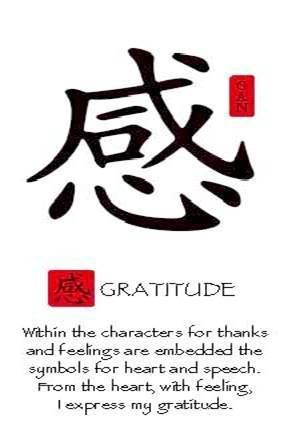 Overall, being Mindful is like living life in High Definition. Once you start viewing life with that level of resolution, you won’t want to go back. Jay Kshatri www.ThinkSmarterWorld.com Resources to Explore:
Overall, being Mindful is like living life in High Definition. Once you start viewing life with that level of resolution, you won’t want to go back. Jay Kshatri www.ThinkSmarterWorld.com Resources to Explore:
GPS of the Mind, by Sylvia Boorstein in Shambhala Sun – http://www.shambhalasun.com/index.php?option=com_content&task=view&id=4137&Itemid=0
To learn the basics of meditation, visit http://www.how-to-meditate.org
See my previous post on Effortless Meditation – http://www.thinksmarterworld.com/2013/11/19/effortless-meditation-2/
For an introduction to meditation, see chapter four in Think Smarter in a Digitally Enabled World: A 21st Century Life Manual for Amplifying Your Knowledge, Achieving Your Potential & Changing the World
Mindful Magazine – http://www.mindful.org
Unlimiting Mind – by Andrew Olendzki
The post Mindfulness – Experiencing Reality in HD appeared first on Think Smarter World.
April 20, 2014
Intelligent Risk Taking for the Risk Averse
Contrary to what you may believe—or have been taught to believe—failure is good. It teaches, builds character, instructs us how not to do something, and leads to understanding of how to do it correctly. Sometimes the only path to success is through failure. In fact, venture capitalists often prefer to staff their start-ups’ leadership teams with people who have a few failures under their belt, the theory being that they know the path of what doesn’t work, and now in a different set of conditions, they’ll find the path to success. Of course, the team is ideally comprised of people who failed a few times and then eventually succeeded. Failing perpetually isn’t the objective.
Failure, risk taking, and success all go hand in hand. If you’re afraid to take risks, statistically you’ll have low failure rates; at the same time, you may also have low success rates. As the old saying goes: “You gotta be in it to win it.”
But like many things in life, there are good and bad ways to take risk, and although at some point you’ll fail, the key will be how effectively you learn from it.
Fortunately, there are several tools and models we can use to help us take risks in a thoughtful way, as well as additional methods that allow us to understand the results of our risk-taking efforts so that we can learn more quickly and improve.
SCENARIO PLANNING
One excellent tool to map out your risk-taking efforts is called Scenario Planning. It originated at the RAND Corporation in the 1940s by Herman Kahn as the creation of plausible future realities. The essence of the technique is to look at the goal you want to achieve and clearly think through all possible outcomes that could occur, starting from your current baseline. In other words, you begin with “This is what I would ideally like to have happen,” and then proceed to “What are all the things that could go wrong?”
Art Kleiner describes the process in his book, Doing Scenarios, as follows:
“Scenario planning forces us to learn to see more clearly the possible worlds in which the unimaginable, the unthinkable, the ungodly, and the unpredictable actually come to pass. If we can feel our way around in them in our imaginations for a while, then we can prepare ourselves for whatever future does come to pass.”
Kleiner is referring to the downside risks, but it’s important to keep in mind that scenario planning can also lead to the uncovering of opportunities. For example, when you map out what could occur, certain outcomes may actually present possibilities for providing a business or service to counter prospective negative issues. In addition, Scenario planning works best when you have as much data as possible to feed into your estimation of future outcomes. Further, it allows you to bring uncertainties to the surface that may arise over time, challenging your assumptions of how you see the future unfolding. It likewise permits possible alternative scenarios to emerge.
With the accelerated pace of technological change and globalization, there’s almost no business, industry, or personal situation that isn’t undergoing rapid change. The challenge lies in the fact that although there are many game-changing variables to consider, you cannot afford to take too much time weighing them. The world won’t let you take a wait-and-see attitude.
Most companies do some level of scenario planning as part of their yearly planning and budgeting cycle; however, the emphasis is often on establishing the next year’s goals and objectives rather than mapping out potential long-term scenarios and building that information back into the near-term business goals. Although corporate risk management teams exist in large businesses—and many are quite proficient at what they do—their assessments don’t always translate to the operational level of the business as they should. One only needs to look at the financial meltdown of 2008, along with recent events in that sector, to see some weighty examples.
While nobody wishes to focus on it, similar long-term threats exist for us all on a personal level. These may include:
Changes in our health
Changes in our career (which could affect our finances or need to relocate)
Natural disasters (an unfortunate occurrence that’s increasing)
Unexpected expenses, etc.
Taking these into account, we can employ the same type of risk management through scenario planning that companies do and apply them on a personal level. In fact, many families do this already on an informal basis, through the sharing of stories between family members. Grandparents and parents will often share how difficult situations befell them throughout their lives, hoping their children will benefit from their experience and avoid the same mistakes. They’re essentially saying: Don’t think this can’t happen to you, because it can, and hopefully you can take the right steps now to avoid it.
If we therefore utilize scenario planning well, we can expect to reap the following benefits:
Challenging our assumptions about the future and uncovering both risks and opportunities
Discovering risks in a systematic way, and in the process, reduce our aversion to taking risks since we can be prepared for them in advance
Thinking outside the box to remove limitations at both the professional and personal level
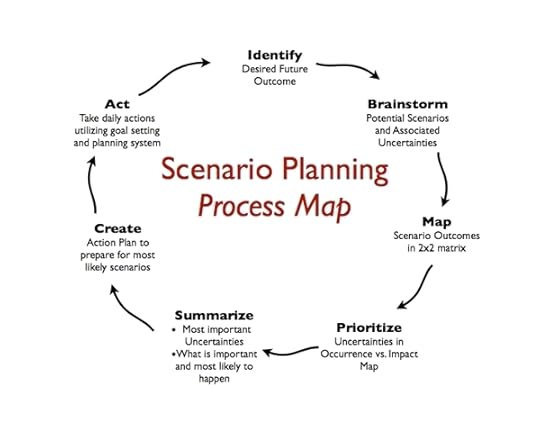
In the Scenario Planning Process Map above, I have outlined the steps you would take to create your own scenario plan for any topic. Start at the top by first identifying the desired future outcome you seek, and then move clockwise to each successive step. As an example to see how this works, say you are considering relocating to a new area. You start by identifying what is the desired situation you seek in the future (not necessarily how it exists today). So, if you’re just starting out as a family, perhaps your major concerns are: (1) Will there be a strong public high school for my children to attend ten years from now? (2) Will the long-term economic trends be positive so that I can have a viable job and afford to send my kids to college?
With that in mind, you move to step 2 and brainstorm all potential scenarios how your desired outcome may or not come true. Think deep about all the uncertainties that could arise and for which you need to do further research to determine their likelihood. Next, the 3rd step would be a simple 2×2 grid, where on the horizontal axis you would place one factor—say low and high economic growth— while the vertical axis would have strong and weak education systems. Once you research those two elements for each location you are interested in moving to, you would then place each location in the appropriate quadrant.
So, from the matrix, if a strong education system and vibrant economic growth were the most important items for your relocation decision, you would want to identify a place to live that you could place in quadrant II, high and to the right.
In short, identifying the trends is important, and the matrix allows you to see what appears to be the most likely scenario based on today’s known information. Where it gets challenging is uncovering information that isn’t readily known. That’s where the strength of your research and forecasting skills comes into play.
In step, 4 we can take further step and map out the uncertainties we have identified and what are the associated probabilities of each of them occurring and their associated impacts.
You can use the Potential Impact Map (above) which is a diagramming tool to consider the Likelihood of Occurrence vs. Potential Impact and allows you to graphically identify what future uncertainties are the most important to pay attention to. From the picture that emerges here, in step 5 we can summarize what are the most important uncertainties to pay attention to and be prepared for.
Lastly, in step 6 we would create an action plan that takes into account the potential risks and upsides we have identified. We can assess the possible consequences for each key concern of the relocation by asking the following questions:
If certain (negative) events did come to pass, what steps could we take to alleviate the situation?
Could we live with the anticipated contingencies?
What steps could we take in the near- and mid-term to help reduce the likelihood of those adverse events occurring, or at least for us to have built up the proper reserves to handle the consequences adequately?
What signposts or milestones will we pay attention to that will indicate certain scenarios becoming more likely over time?
Are we considering all potential risks in our scenario planning? What could happen though we currently think it has a low probability of occurring?
We would then integrate our plan into our overall goal setting system. ( See my previous post on Goal Setting in a Continuously Changing World.)
Done properly, scenario planning allows us to:
Look into the future and envision possible scenarios
Consider the consequences of their occurrence
Examine our ability to handle them
Ponder what steps we could take in the near and medium term to reduce our risk
Scenario planning isn’t always an exact science, but the more data you can acquire, the more you’ll identify the scenario most likely to occur, and hopefully also become aware of potential ones to be prepared for should they arise. Though it may seem daunting, it’s less about predicting the future and more about pinpointing a number of different possible eventualities. Understanding the consequences (both positive and negative) of those potential outcomes is what scenario planning is all about.
There’s a lot more to know about intelligent risk taking, including how to review and learn from your inevitable failures. See chapter seven in my book, Think Smarter in a Digitally Enabled World, for more details.
Jay Kshatri
www.ThinkSmarterWorld.com
The post Intelligent Risk Taking for the Risk Averse appeared first on Think Smarter World.
April 15, 2014
Becoming Goal Oriented in a Continually Changing World
Once we start to understand the world around us better through tools such as systems thinking, we’re naturally going to identify areas for improvement. We’ll begin to see where making some changes can vastly improve how we do things, and we may even decide to create new goals for ourselves. Having a high-level map of what we would like to achieve is a key step in moving from the reactive to proactive mindset we covered earlier in the e-Course and in Chapter One of Think Smarter in a Digitally Enabled World. But the reality is that over 90% of people don’t actively set, write down, or track their goals. Why? It seems to often stem from a few common themes:
It takes time and energy
There’s always something better to do, right?
Fear of failure
Not hitting your goal is a form of failure. Failure feels bad, so why put yourself in that position?
Questioning if it generates results
Things change, circumstances change, so why even create goals in the first place?
These are all understandable reasons to resist goal setting; however, study after study shows that people who create and track goals are more successful in their lives.
Those of you working in corporations are likely steeped in your company’s goal-setting process, as these are found in most mid-to- large businesses and every venture-funded start-up. Goals, and the milestones needed to achieve them, are the lifeblood of these companies. This is how the various employees are directed to work toward the same corporate objectives.
In our era of technology and media abundance, having daily, monthly, quarterly, and yearly goals becomes almost a necessity. We don’t necessarily have to script our entire day in tremendous detail, but it’s important to at least have major guideposts. It’s so easy to be distracted by our overabundance of social media and other diversions that we can easily lose a few hours or more of our precious time every day—with little to nothing to show in terms of meaningful achievements. But when we have goals, they serve as our guide to what is most important, urgent, and meaningful, allowing us to become clear on what needs to be accomplished first before other things divert our attention.
The pioneer in goal setting research is Dr. Edwin Locke, Professor (Emeritus) of Leadership and Motivation at the R.H. Smith School of Business at the University of Maryland, College Park. In his 1968 article “Toward a Theory of Task Motivation and Incentives,” Locke pointed out that the act of working toward a goal actually provided motivation to reach the goal. This, in turn, improved performance. This concept has now become mainstream thinking, and the oft- quoted line in management circles is: “What gets measured, gets achieved.”
Locke, et al, wrote in 1981:
“A review of both laboratory and field studies on the effects of setting goals when performing a task found that in 90% of the studies, specific and challenging goals lead to higher performance than easy goals, “do your best” goals, or no goals. Goals affect performance by directing attention, mobilizing effort, increasing persistence, and motivating strategy development [i.e. different ways of achieving the goal].”
In 1990, Locke published a major update to his work in a book titled A Theory of Goal Setting and Task Performance. The book outlines Five Principles of Goal Setting and states that for goals to truly be motivational, they must have the following characteristics:
Clarity
Goals need to be clear and measurable.
Challenge
More challenging goals produce higher levels of motivation.
Commitment
Goals that are understood, and to which there is a clear commitment, are most likely to get done.
Feedback
You need to have periodic check-ins to see how you’re doing against the goal and if there should be any adjustments made to your effort or to the goal itself.
Task Complexity
Goals should essentially be attainable, given their complexity level.
Kenneth Blanchard and Spencer Johnson leveraged Locke’s work and in the mid-80s developed the SMART goal system (Blanchard, Zigarmi, & Zigarmi, 1985). The SMART acronym stands for:
Specific
Measurable
Achievable
Realistic
Time-Related
*Now, one caveat is in order. Sometimes we can become too focused on our goals and that in fact can lead to less than desirable outcomes. Things are changing in our environment all the time, and it may make sense to change our objectives slightly, or to abandon a particular goal all together. This may be necessary as our current goal is taking us down a less than satisfactory path (or harmful one in some cases). Or, perhaps a new more desirable opportunity has arisen that may make more sense for us to pursue. In many ways, it is advantageous to stay focused on the big picture, be comfortable with some level of ambiguity, and not get too obsessed with any particular numerical target or milestone. And, if we stay open and mindful, we’ll get better at spotting these change-points and how to deal with them effectively.
“People often say that motivation doesn’t last. Well, neither does bathing, that’s why we recommend it daily.” – Zig Ziglar
HOW TO STAY MOTIVATED
Over the years, individuals and organizations have developed certain techniques to help them stay positive and motivated as they strive to attain their goals. Whenever we’re embarking on something that’s difficult, it is possible to become deflated as we encounter difficulties in our path. These approaches can help us stay on course.
Break down big goals into chunks
A big, challenging goal that’s broken down into more manageable pieces is more likely to be achieved. You’re less likely to fail at the smaller, more attainable sub-goals, and each small success bolsters your motivation.
Celebrate
As you reach the intermediate milestones, reward yourself. This could be as simple as a cup of coffee at your favorite café or buying something you’ve had your eye on for a while. Just remember that the perk should be relative to the magnitude of the accomplishment.
Acknowledge the good things
Consciously recognize when something positive has occurred. Too many times we’re quick to point out how bad things are, and not as quick to recognize the good things when they happen. Positive, upbeat, and motivated people make a habit of taking a mental inventory of the things that are going right in order to keep their momentum.
Tell people
Studies have shown that if you tell people your goals, you’re more likely to achieve them. One reason is because it creates accountability —people like to follow through in front of their friends and family. Secondly, those same people can be effective cheerleaders. You’ll want to share your goals with people you feel you can trust and who will be positive and supportive in your efforts. You may even choose an individual to jointly pursue some goals so you can mutually support each other. A common example of this is a “workout buddy.”
Now that we know what goal setting is, and how it improves our probability of success, we want to create a plan for the various aspects of our lives that we care the most about. Here are some steps to take when developing an effective Goal Setting Plan:
DETERMINE WHAT’S REALLY IMPORTANT TO YOU
When you look around at the people who are very successful, one trait stands out: their clear view of what they deem important and are passionate about. When you have clarity about this, it’s harder to get distracted.
To determine what’s important to you, or what your priorities really are, try asking yourself the following questions:
What do I care about the most?
What do I tend to get most passionate about?
What do I never get bored of doing?
What makes me feel most alive and connected to the world?
What do I tend to argue about the most?
What do I wish I could change about myself?
If money was not a consideration, what would I like to spend my days doing?
What are the few things that, if I accomplished them, would radically change my life?
What habits would I like to create and which ones would I like to eliminate?
Is my spiritual life where I want it to be? What questions do I have in this area? How should I go about finding out the answers? Are there new experiences I would like to have?
How would I like my family to communicate better and function more effectively?
Did I become the person I thought I would become when I was younger? If not, why? What would I do differently from here on out?
Are my finances where I would like them to be? What could I do in the next 1–3 years to get them to the right place?
Am I happy with my current state of health and fitness? What are my options to improve?
Am I satisfied with my level of communication skills with my spouse, family, and colleagues?
Am I satisfied with my current job? What 3–5 things would I change about it if I could?
What arouses my curiosity the most?
The answers to these questions are your main drivers— the core values and things you care about that create your “Why” in life.
Once you have a sense of these, you can then start to create goals in the areas of your life you find important. In general, you’ll start seeing that your goals fit into certain categories. For most people, these would include:
Life Goals
Family Goals
Financial Goals
Career Goals
You can add as many categories as make sense for you.
You’ll also see that these questions guide you in identifying the big things in life:
The Life Experiences you want to have
The Personal Growth and Development you want to achieve
What you want to Give Back to the world
Thing big, really big. Don’t hold back. Go for BHAG—Big, Hairy, Audacious Goals! If you’re going to create a vision, you might as well make it a dramatic and compelling one.
Lastly, put your goal setting into action. There are a number of things to do – from creating a long range goal setting plan using a simple spreadsheet approach to using a number of different apps. Both approaches are detailed in my book Think Smarter in a Digitally Enabled World: A 21st Century Life Manual for Amplifying Your Knowledge, Achieving Your Potential & Changing the World, along with a more detailed discussion of goal setting and other tools and approaches to use. In addition, the book discusses how to use various techniques to increase the likelihood of manifesting your goals.
But to get you started, one thing that works extremely well, is to daily write down your top 3-5 tasks in support of your goals that you must complete for that day. Anything accomplished beyond those will be a bonus. These are the items that create major forward momentum for you – they are the objectives that if only they were completed, you would still achieve the majority of progress you seek. This simple technique also creates focus and clarity among the many competing priorities you face on a daily basis. It also allows you to be flexible in your goal setting – each day’s objectives are dynamically set based on the changing circumstances in your life. Try using it with the Nozbe to-do app.
Till next time, here’s wishing you achieve all of your objectives!
Jay Kshatri
www.ThinkSmarterWorld.com
The post Becoming Goal Oriented in a Continually Changing World appeared first on Think Smarter World.
April 1, 2014
Four Must Have Tools to Manage Information Abundance
Unlimited access to the world’s’ collective information is only as good as our ability to organize, manage, and retrieve it effectively. As productivity guru David Allen says: “We must go beyond our brain’s limitations to hold information for us.” If you aren’t familiar with David’s “Getting Things Done” methodology, one of the key points of his approach is to relieve the burden on the part of your mind that excels at short-term, not long- term, memory capture. You can achieve this by filing away information into some type of “off-brain” storage—a notebook, folder, etc.
Fortunately, we have great user friendly apps to help us and ensure that we are able to easily off-load and catalog the information we collect on our daily digital journey.
I use four tools in particular on a daily basis to help organize information, make sense of it, and convert it into actionable next steps.
Evernote
Evernote is a sophisticated note-taking tool that many of you are probably aware of. At its core, it allows us to organize into notes and notebooks the vast amounts of knowledge and information we encounter on a daily basis, such as: web pages we like, articles, blog posts, an interesting picture, an email we’d like to archive, and more.
Once in Evernote, the information becomes highly searchable, making it a vast database for our knowledge that we can use to grow and learn. Evernote has a few main building blocks:
NOTES
This is for individual notes you would create on any topic. They can be small to-do type notes or larger project-oriented topics, and they can contain all types of content: words, photos, web pages, audio clips, PDFs, attached documents, and more! To make your notes highly searchable, Evernote allows you to put tags (descriptive words) in the note to describe it.
Even if you don’t use specific tags, one of the great features of Evernote is that it makes anything you enter into a note completely keyword searchable. If you clip a web page for example, you can later search for it based on a keyword you remember. You can even search handwritten notes you’ve copied into the program. In this way, Evernote truly strives to be a brain assistant.
STACKS
You can take an additional step and make a collection of notebooks called a Stack.
PENULTIMATE HANDWRITING APP
Evernote has also done a great job of providing some ancillary tools that work well with its app and help get the most out of it. I find the Penultimate Handwriting app particularly useful as it allows you to use a stylus to take notes at meetings, lectures, workshops, etc. Your handwritten notes are integrated into Evernote seamlessly, and you can share them with colleagues and family at the touch of a button.
SKITCH
Another great tool to have in your arsenal, this one allows you to draw or write notes and sketches for brainstorming and communication purposes. You can also annotate documents or pictures that you bring into the app.
WEB CLIPPER
The other must-have item within Evernote is the Web Clipper. This widget works in all major browsers and enables you to clip whatever web page you’re viewing directly into a note/notebook in your Evernote account. Once you’ve put information into Evernote, you can keep everything synched among your devices—MAC, PC, iPhone/iPAD, and Android. If you enter something into your Evernote account on your iPhone, for example, it will automatically synch with the app on your iPAD and MAC.
Evernote, which now has over 34 million users around the world, has gone to great lengths to provide valuable tools that work with the database. As such, additional Evernote add-on apps are available through their website as well as numerous others offered from Evernote partners that can be found in the “Trunk” of the system.
Resources:
Evernote’s website does an outstanding job of providing written and video tutorials. “Getting Started with Evernote” is a good place to begin: http://evernote.com/getting_started/
Evernote Essentials by Brett Kelly is an excellent book on mastering the core functionality.
Michael Hyatt, the former CEO of Thomas Nelson Publishers, runs an outstanding blog on intentional leadership at www.MichaelHyatt.com. He is a big fan of Evernote and has written a number of posts on how to use it in a variety of ways: http://michaelhyatt.com/how-to-organize-evernote-for- maximum-efficiency.html
A related tool to save web based articles for later view is Pocket. Pocket allows you to save a web page to access it for reading it later. This delayed gratification allows you to more quickly process your inbox, not have to re-read an email later to figure out what links you are interested in, and neatly organize your online reading list for a more appropriate time. For us MAC users, we can achieve a similar result by using the Reading List capability in the Safari browser. I in fact use both Reading List and Pocket – I use Reading List as a placeholder for web pages that I need to come back to as research for a current project or task I am working on and Pocket for general articles of interest.
But Pocket has a number of features that go much beyond Safari’s reading list feature and make it indispensable in today’s multi platform / multi app digital world:
Pocket runs on MAC OSX, iOS, Android, Chrome, and any web browser web. There are also third party clients for Windows Phone, BlackBerry, WebOS, and others available. So, if you are someone who uses a number of different platforms spread out across your home and business lives, Pocket will keep you synchronized no matter what device you are using at the time.
Pocket also works with a number of third party reading apps – Pulse, Flipboard, and Zite being examples and is in fact integrated into over 500 apps! When you are using one of those apps, Pocket allows you to save an article for reading later directly from within the app.
Pocket allows you to see your content in “Article View” – a very clean, non-distracting presentation of the article alone or in “Web View” – where you see the article within the actual web page. Safari’s Reading List functions similarly, but always defaults to web view. With Pocket, you can default to seeing every article in Article View if that’s what suits you.
Allows you to sort and retrieve by Article, Video, or Image.
Built in social networking – send any article video or image by email and post to Twitter, Facebook, or Buffer. Also includes direct interface to your Evernote account for long term storage of content.
A separate “Archive” folder where you can park web pages for longer term viewing or retrieval so that you keep your main Pocket page cleaner.
Unlike some other read-it-later apps, it’s free.
If you want to manage your particular abundance of information, Pocket is a must have app.
Resources:
Deep Dive into Pocket, the Beautiful Save it for Later Service: http://thenextweb.com/lifehacks/2012/08/09/deep-dive-pocket-beautiful-save-later-service/
Mind Mapping with MyThoughts
While Evernote is great for inputting the “Raw Data” of your life into an organized and searchable format, Mind Maps are better at visually organizing and seeing the connections of key aspects of that raw data. Mind maps are a great way to brainstorm about any subject—a concept, a problem, a new project, just about anything. You can even view them as a way of taking notes on a topic.
To start a mind map, you put the topic of interest in the big center circle. The branches coming out of the center topic are the associated subtopics, and you can add subtopics with their own branches with additional categories. You can also use colors, images, and other highlighting to indicate various parts of the system, or to differentiate among ideas associated with the main topic.
MyThoughts is a Mind Mapping app for MAC OSX based computers only, but MindJet and XMind run on both MAC and PC. Either one work very well. If you haven’t done Mind Mapping before, give it a try – it’s actually very fun and easy. It’s a great way to simplify and capture the core essence of information.
Resources:
Mind Mapping Guide from the University of Adelaide Writing Department – https://www.adelaide.edu.au/writingcentre/learning_guides/learningGuide_mindMapping.pdf
The Power of MindMapping free e-book – http://www.mapyourmind.com/ebook.pdf
Nozbe
Once you’ve gotten a hold of all the information flowing through your life, you’re at some point going to want to take action and get things done. This will lead to action items and goals and Nozbe is a great tool to help you make those to-do lists easy and useful.
Nozbe is very simple to use and they have an outstanding video course on their site explaining how to use the product that is narrated by their CEO. There are also built in tutorials within the App that you can call up as you need them. At its heart, Nozbe has you assign action items to individual “projects”. In the free version, you are allowed to create up to five projects. For most people, this will suffice. However, if you Nozbe for your professional needs, you will probably exceed that allotment and will need to get the paid version, which is reasonably priced. Nozbe also has some nice features to share to-do lists and status information with colleagues who are working on the same project. It’s a very thoughtful product and totally aligned with the productivity concepts of David Allen.
Resources:
10 Steps to Productivity Course - http://www.nozbe.com/course/
Productive! Magazine – Nozbe’s free productivity magazine within is available as a free Itunes app. It contains advice and tips from the world’s leading productivity experts. https://itunes.apple.com/us/app/productive!-magazine/id452699030?mt=8
With these four tools I am confident you will be able to better manage and utilize the endless supply of information, content, and ideas we now have access to. An organized mind, is a happy mind…
~Jay Kshatri
www.ThinkSmarterWorld.com
The post Four Must Have Tools to Manage Information Abundance appeared first on Think Smarter World.
March 24, 2014
Have You Found What You’re Looking For?
In the course of being more mindful and asking better questions about the various aspects of our lives, we subsequently need to improve our ability to find the answers to those questions. The Internet has given us an amazing gift: the organized treasury of the world’s collective knowledge. But in order for us to make the most of this valuable resource, we need to be able to access it effectively.
The best way to accomplish this is to significantly increase our ability to use the major Internet search engines so that we can find exactly the information we’re looking for. And, given how big a body of knowledge the Internet now catalogs (Google says that the Web now has more than 30 trillion unique individual pages), the effective use of search techniques is even more critical.
The task of finding exactly what we’re looking for in this vast sea of data can be daunting. However, armed with specific search techniques, you can cut through that mountain in short order.
Search Engine Basics
First, let’s explore how search engines work. We’ll focus on Google as it’s currently the most popular search engine, but others, like Bing and Yahoo!, work in a similar fashion.
Google uses automated programs called spiders to search (or crawl) through websites and note how often keywords appear on any given web page.
It keeps an index of keywords and where it located them.
Google then ranks the sites using this data, which determines the order in which Google displays those results on its search results page.
This ranking is a proprietary algorithm called PageRank, which assigns a relevancy score to each web page Google has analyzed.
PageRank scores a web page by the frequency and location of keywords within the web page. Specifically, if a keyword appears once within the body of a page, a low score will be assigned for that keyword. In addition, the length of time the page has existed is important as well—the longer, the better.
Also important is the number of web pages that link to the page being ranked. For Google, this determines. So in essence, if a page is often referred to (or linked) back to by other people, its PageRank will be higher. In a way, it’s somewhat like a popularity contest.
So let’s take an example:
You want to search for Jon Stewart.
If you go to Google and type “Jon Stewart,” the Google engine will determine the web pages that may match “Jon Stewart.”
If the first web page contains “Jon” but not “Stewart,” and the second web page contains “Stewart” but not “Jon,” those two pages are out of the running.
If another web page has both “Jon” and “Stewart,” it will be considered.
Once Google has identified what documents are in the running, it determines how to rank those pages.
To do this, it uses PageRank along with 200 other factors (the Google secret sauce as they like to cal it) to make its decision. A key factor, of course, is how often the page is cited and linked to.
So now you know why various pages appear in a certain order when you do a search on Google. Essentially, they are ranked in relevance by:
How many times your keywords are present on that page
How many links have been made back to that page by others (this indicates how often other people have found that page useful)
Other data that Google uses in order to estimate how relevant the page is to your search query
What this means to your search strategy is that in order to get the right information and have it appear as high as possible in your search, it’s critical to use the right keywords. And, as we’ll see, how you tell Google to use those keywords in the search makes a big difference.
How to Drive Google
We want to fine-tune how we construct our search query to maximize the chances that the most relevant results are found and shown as high as possible in the list. Otherwise, you might get back a million-plus documents, and the ones that could truly be helpful to you may be many pages down in the search results. In that case, if you persevere you may eventually find the answers you seek, but more often, you’ll tire of the search and give up. Or perhaps worse, you’ll make do with less than optimal information to answer your question.
In order to understand how to make our search more effective, let’s take an example and explore the different ways we could construct the search (which keywords along with which commands in Google to use) to fine-tune our search.
Say we would like to know the latest information on Global Warming.
We could just enter the words Global Warming into the Google Search Bar and see what comes up. From our earlier explanation of how Google looks at keywords, we know it will look for documents that have both the words Global and Warming someplace in the document. In addition, we know that Google will look at things such as relevance, links, and up to 200 other factors (the secret sauce). In other words, when you type in Global Warming, it will make a judgment that you’re looking for information on that phenomenon and try to give as much relevant information as possible in the search results it delivers to you.
For this particular search, you would get 183,000,000 web page results, and the top three would include the Wikipedia definition of Global Warming, New York Times articles on Global Warming, and a section on Global Warming on the National Geographic website.
Put it into action
Now, to get more targeted results, here are a few things to try:
[image error] Use Quotation marks to search for an Exact Phrase
We can type in “Global Warming” to tell Google that we want only search results that have the exact phrase “Global Warming.” If you were to type this into Google, you would see your search results go down to 66,900,000. Your first few results would be the same, but then you would start seeing some different results after that, including ones where the term is in the website name itself.
[image error] Get More Specific
The more specific we get with our keywords, the more we give Google to work with to get the best information for us. In this case, we could identify other terms for Global Warming, such as Climate Change, that may net us better results. By typing “Global Warming” “Climate Change” into Google, we now get approximately 94,000,000 results, and different pages appear in the top ten. The more keywords you provide Google, the better it will be at finding exactly what you want.
As an example, you could type in: “Impact of Global Warming on world Economic Activity” if that was your specific topic of interest.
[image error] Have Google look for Similar Words and Synonyms
A neat trick to take advantage of the speed and power of Google’s computing engine is to have it search for similar words to your keywords in order to capture as many relevant search results as possible.
So say that what you’re really interested in knowing is Why is Global Warming or Climate Change an issue? In this case you could type:
“Global Warming” “Climate Change” ~issue
The “~” symbol placed in front of a word tells Google to find similar words to that word in the search. When you run this search, you now get approximately 23,400,000 pages in your results with again a different set of matches in your top ten.
You can also use the asterisk “*” to trigger Google to identify additional search terms that perhaps you aren’t familiar with regarding a word or phrase. If you place the “*” in between two words, Google will return pages with phrases containing your two keywords and another word in between. In our Global Warming example, you would type:
Global * Warming
With this search, one of your top results would be from a site covering “Global Greenhouse Warming.”
[image error] The “OR” command
Google, by default, will try to identify pages with all search terms listed (the AND command is automatically assumed for you in the search field—Climate AND Change, etc.). If, however, you have two phrases, and either one would meet your need, you can use the OR command:
“Climate Change” OR “Global Warming”
As you can see, what we’re doing is a process of first being as inclusive as possible in our search keywords—to ensure we capture all relevant data—and then becoming more specific in order to ensure that the most relevant items appear as high in our search results as possible.
[image error] Exclude words or phrases
When you run a search, the search engine displays the massive number of web pages that match your search criteria. As you follow these tips to get more advanced in your search capability, the goal is to reduce this number to only the pages that more closely match what you’re looking for.
The exclude command is one way to reduce the number of results by removing those that are less relevant. For example, when researching Global Warming, you may want to focus on learning about the causes of it rather than the costs involved. You would therefore type in the following:
“Global Warming” -~costs
Or, you could fine-tune it even further by including some additional terms and commands:
“Global Warming” OR “Climate Change” -~costs
This way we’ve included any documents with Global Warming or Climate Change, and excluded any reference to costs or other terms similar to it.
We could get even more specific. Since we’re looking for causes, we could add that to our search string:
“Global Warming” OR “Climate Change” ~cause -~costs
Just by using what the techniques we have gone through will dramatically improve your search results. In general the better you are at identifying what you are looking for and what key words would describe that item, the more successful you will be. After, that, it becomes a matter of using particular commands and techniques to fine tune your search results to filter out the less relevant information so that you are seeing the most important items as high up on your search results as possible.
There is much more that you can do with Google and other search engines than we have covered here. If you, would like to learn more, refer to Chapter Four, Mastering Internet Research to Find All the Answers, in my book Think Smarter in a Digitally Enabled World.
➨ If you liked this post, please share it with others on your various social networks.
If you want to gain more insight into the topics in this post, please see Think Smarter in a Digitally Enabled World: A 21st Century Life Manual for Amplifying Your Knowledge, Achieving Your Potential & Changing the World. The book is about changing the world through mastering holistic systems thinking. With massive technological change and globalization affecting almost every facet of our lives, the “Killer App” in the 21st century will be the ability to Continuously Learn and leverage our capability for Proactive Thought. With the Internet, we now have instantaneous access to the world’s collective knowledge – which grows exponentially every year. Those who can access it, analyze it, make sense of it, organize it, and put it into action will deeply accelerate their personal and professional success. It will require using a new set of thinking tools, fully harnessing our digital technologies and apps, understanding how to see the systemic interconnections in our daily lives, and learning to maximize the combination of our logical left brain and our intuitive, creative, and spiritual right brain. The book gives the reader the tools, techniques, and strategies to accomplish this goal.
The post Have You Found What You’re Looking For? appeared first on Think Smarter World.


